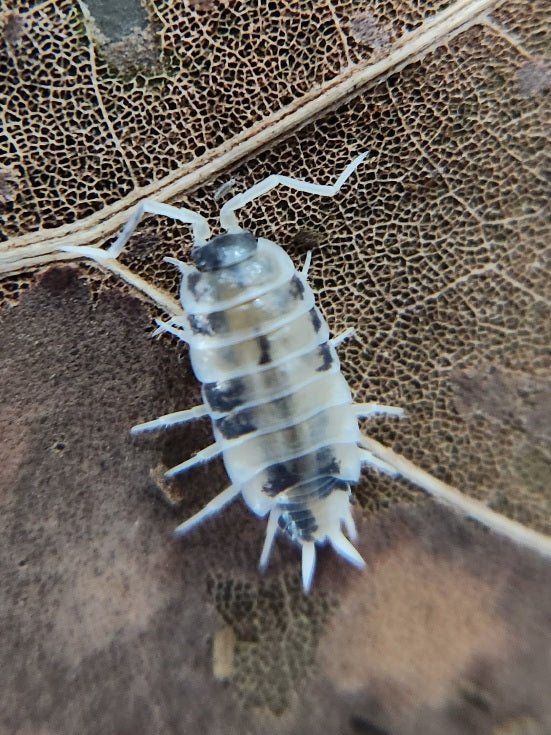Powder Blue Isopod | FAQs
-
What exactly are Powder Blue Isopods?
-
They are a natural color variation of Porcellionides pruinosus. They have a distinctive grayish-blue color with a "powdery" white coating.
-
-
Are Powder Blue Isopods good for bioactive terrariums/cleanup crews?
-
Yes, they are highly regarded as an excellent clean-up crew (CUC) for bioactive enclosures. They are very efficient at breaking down organic matter like leaf litter, dead plants, animal waste, and decaying wood, contributing to a healthy and self-sustaining environment. They are active on the surface, making them visible and effective "janitors."
-
-
What do Powder Blue Isopods eat?
-
Their primary diet consists of decaying plant matter, particularly hardwood leaf litter and soft rotting wood. They also readily consume vegetables (e.g., squash, carrots, cucumber, sweet potato), commercially available isopod foods, and protein sources such as freeze-dried minnows, shrimp, or high-quality fish food flakes. Calcium sources like cuttlebone or finely crushed eggshells are essential for healthy molting.
-
-
What are the ideal temperature and humidity ranges for Powder Blue Isopods?
-
They are quite hardy and can tolerate a range of conditions, but ideal temperatures are typically between 70-85°F (21-29°C). For humidity, a moderate to high range of 45-90% is often recommended, with a moisture gradient in their enclosure (one side damp, the other drier).
-
-
What kind of substrate do Powder Blue Isopods need?
-
Organic topsoil, peat moss, or specialized isopod bedding (like flake soil). A generous layer of dried leaf litter and rotting hardwood should always be provided on top of the substrate for food and hiding.
-
-
How quickly do Powder Blue Isopods reproduce?
-
They are known for their extremely high reproductive rate. Once established and provided with proper care, they breed prolifically, making them excellent for quickly establishing a robust clean-up crew population.
-
-
What kind of enclosure is best for Powder Blue Isopods?
-
A plastic storage bin or a glass terrarium with good ventilation is suitable. For a thriving culture, a 6- to 20-quart enclosure is often recommended to allow for a good moisture gradient and space for the colony to grow. They need plenty of hides like cork bark, rotting wood, botanical seed pods, and a lot of leaf litter. You can never have too much leaf litter.
-
-
How long do Powder Blue Isopods live?
-
Powder Blue Isopods can live for up to two years as adults, reaching maturity in about 2 to 3 months.
-
-
Are Powder Blue Isopods suitable for arid or tropical environments?
-
They are quite adaptable and can thrive in a wide variety of environments, from semi-arid to tropical conditions, as long as a suitable moisture gradient is provided. This adaptability makes them a popular choice for many different terrarium setups.
-
-
Do Powder Blue Isopods pose any threat to pet inhabitants in a terrarium?
-
Generally, Powder Blue Isopods are peaceful and fast-moving, making them good cohabitants with most reptiles and amphibians. They are usually quick enough to escape if an insectivorous pet tries to eat them. However, it's always important to not neglect the enclosure and ensure the isopods have sufficient food (leaf litter, decaying wood, and botanicals such as seed pods, along with a small amount of supplemental foods such as vegetables and protein).
-


